JHP Newsletter - 2006, No. 3, 5 May
Web: New Look and Feel
The James Hager Photography website has an updated look and feel, and has been totally revamped behind the scenes to improve maintainability. The work was done by Avanti Web House, a website development company aimed at small businesses. There are also new images on the website.
Equipment: Great Service from Canon and Sigma
I received some great service from Canon and Sigma recently, and wanted to spread the word. The shutter in my Canon EOS 1Ds Mk II was hanging when shooting at 1/1000 and faster causing the edge of the image to be overexposed. I sent the out-of-warranty body in for repair, and they returned it promptly after replacing the shutter unit and returning the body to factory specs. I was surprised that they did it for free! Yes, free.
My Sigma AF 120-300 f2.8 APO EX IF USM developed a loose case on the Antarctica trip so that the lens flexed at a joint on the camera side of the tripod collar. I sent the out-of-warranty lens in for repair, and they returned it promptly after fixing it. They also did it for free. Unbelievable.
Tour: Tanzania in February 2007
Join me for an amazing 15-day photo safari to Tanzania in February 2007 (3-17) during the height of the wildebeest birthing season where we will visit two of the most famous locations in East Africa to view and photograph wildlife: Ngorongoro Crater and Serengeti National Park.
Tour: Primates in February 2007
Join me for an awesome photo safari to East Africa in February 2007 to see and shoot primates, specifically chimpanzees and gorillas. The details of the safari are still being ironed out, but we will be spending three days at Gombe Stream National Park, Tanzania, shooting chimpanzees followed by four days at Volcanoes National Park, Rwanda, shooting gorillas. This safari will be unlike most other African safaris because all of the shooting will be done on the ground after hiking to the subjects. It's a wonderful experience to be in close proximity to these close relatives of ours in their natural habitat. The safari is scheduled to mesh with the Tanzania in Feb 2007 safari, so join me for both to make the most of your air travel to Africa.
Travel: Southeastern Utah
I've just returned from a week-long visit to southeastern Utah. I've stopped in that area several times over the last few years, but it was usually on the way to another destination. This time, it was the destination. The visit was timed to coincide with the spring wildflower season, and the common paintbrush, claretcup cactus, and dwarf evening-primrose were some of the dominant species in bloom. The weather wasn't particularly good for photography with mostly clear hazy skies and light to blustery winds. It seemed like rabbits (desert or mountain cottontails) were everywhere throughout the region, and blacktail jackrabbits were also very common.
First stop was two days at Canyonlands National Park in the Island in the Sky District which is in the northern part of the large park and is at the top of the "Y" formed by the confluence of the Colorado and Green Rivers. The main part of this area, read the part with paved roads, is at the top of a large mesa overlooking the wide valleys carved by the two rivers. It's almost like being in the center of an extra wide Grand Canyon. The mesa is accessible by a neck that's about 30 yds (27 m) wide, hence the term "island" to describe the area. It was my first time to that part of the park, and of course I had to take a shot of Mesa Arch at dawn which is _thee_ iconic image from Canyonlands. The first morning I shared the area with four other photographers, and it was a fairly relaxed environment. The second morning I shared it with twelve photographers, and it was a zoo!! The image of Mesa Arch below was created using the high dynamic range (HDR) feature of Photoshop CS2 to combine 5 images taken at one stop intervals to provide good shadow detail and no blown highlights near the sun. This is the first time I've been able to get better results using HDR than by using the older manual methods of combining images, so I'm happy that I'm learning how to take advantage of this advanced tool. Because there's no water available in that part of the park (Who ever heard of a national park visitor center w/o any water?!), I visited the neighboring Dead Horse SP where they do have water. I left Canyonlands via the Shafer Trail 4WD road which switchbacks down the side of the mesa. What a difference it was to be looking up at the mesa with the shear red sides.
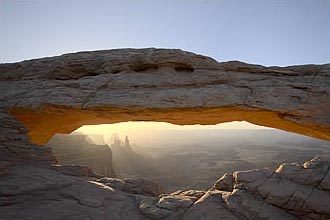
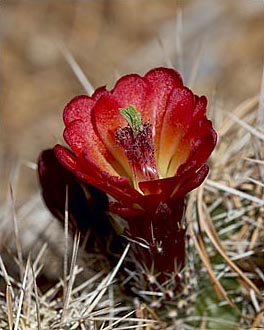
(Island in the Sky District), Utah
Then I spent two days in Arches National Park. It was the first time I had made that a destination in several years, and I explored parts of the park I hadn't been in before, mainly the Klondike Bluffs area in the NW corner of the park which is accessible by a long dirt road. It's suitable for 2WD vehicles, so I'm not sure why I didn't explore that region before. I also checked out two arches in the center of the park for the first time, Sand Dune and Broken Arches. They're fairly close to the main road, so once again I'm not sure why I hadn't visited them before. I didn't make it out to Delicate Arch because of the poor shooting conditions at sunset. I was looking forward to heading out there because a park ranger said there's almost no trace left of the fire that was set under the arch a few years ago. (It might be noticeable if you're standing right above the area where the fire had been and are looking for evidence.) So, it sounds like it's safe to photograph this icon again.

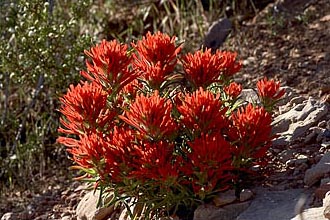
Then I spent two days in Canyonlands National Park in the Needles District. It's in the SE portion of the park, and I had stopped there a couple of years ago for part of a day. It's mainly located at the same elevation as the "bottom" of the Island in the Sky District, and the main attraction is the many needles and spires.
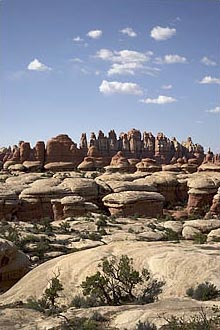
(Needles District), Utah
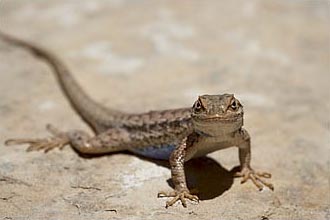
The final location in Utah was two days in the area near Valley of the Gods. It's similar to the more famous Monument Valley to the south, and I think I know why Monument Valley is more famous — great images can be made there at sunrise (at least), but sunrise and sunset in Valley of the Gods is complicated by the mesa that practically surrounds the area preventing the light from reaching the best formations right at sunrise and sunset. On the morning I spent at Valley of the Gods, I was totally disgusted when a convoy of about 50 vehicles with hot air balloonists drove down the dirt road near the edge of a spectacular shot I had envisioned while scouting the area the evening before. They were kicking up a huge cloud of dust that soon spread into the shot I planned to take, and after a while part of the convoy drove past me putting even more dust in the way. Then the fairly peaceful morning was shattered by the sounds of small gas engines blowing air into the balloons followed by propane burners (blow torches) heating up the air. Well, the light didn't hit the formations like I had thought it would, and the best shots I got of the area included those blasted hot air balloons. If you're given lemons, make lemonade. :)
While in that general area I also visited Natural Bridges National Monument. There are three bridges in the narrow winding Armstrong and White Canyons. Sipapu Bridge (below right) is one of the largest natural bridges in the world with an opening that's 220 ft (67 m) high and 268 ft (82 m) wide.
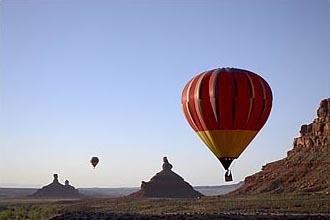
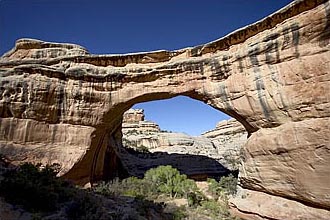
On my way back, I spent the night at Great Sand Dunes National Park and Preserve in Colorado. The weather for sunset wasn't interesting at all, but it was decent for sunrise. I hiked up into the dunes (I hate hiking in sand, especially uphill in sand!) and found an undisturbed ridge that was great for photography. Better yet, I had the dunes all to myself while I was shooting.
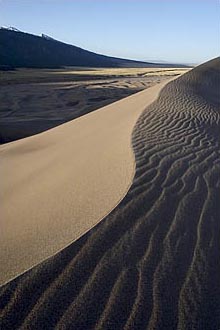
and Preserve, Colorado
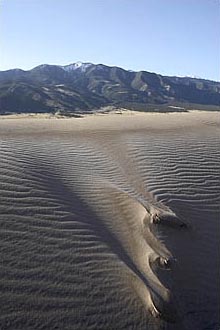
and Preserve, Colorado
Take care, and happy shooting.
— James
James Hager Photography :: www.jameshagerphoto.com




